
Successful management of fecalith impaction in the distal ileum using a transendoscopic enteral tube for targeted drug delivery
In August 2024, our team first reported on the use of transendoscopic enteral tube (TET) for targeted ileal drug delivery to resolve massive fecal impaction in the small intestine in the international leading journal 《Endoscopy》. This is the third paper on TET technology published in 《Endoscopy》.
A 69-year-old man presented with one week of abdominal pain and distension, accompanied by nausea and vomiting for one day. Computed tomography (CT) identified distal small intestinal wall thickening with a 3.4×2.8 cm high-density intraluminal foreign body (Fig. 1) and proximal intestinal dilation with air/fluid levels. Despite conservative treatments, including intravenous hydration, feeding tubes, stool softeners, and enema, the patient’s symptoms persisted. Intestinal ultrasound confirmed a strong echo mass in the distal ileum. Subsequently, a double-balloon enteroscopy was performed to remove the foreign body, revealing a black fecalith impacted in the distal ileum approximately 40 cm from the ileocecal valve (Fig. 2). Besides, a circular ulcer with stenosis was observed surrounding the fecalith, complicating its removal. Despite attempts with balloon catheter and laser lithotripsy, the fecalith could not be dislodged due to its characteristics and intestinal stenosis. Endoscopic incision and dilatation for inflammatory ulcer stenosis also involve significant risks. Ultimately, transendoscopic enteral tube (TET) technique was performed below the fecalith for targeted drug delivery. Dexamethasone (10 mg/day) was administered via TET for three days to alleviate the inflammatory stenosis. Follow-up CT revealed improvement of the distal ileum inflammation (Fig. 3), with the fecalith descended to the terminal ileum near the ileocecal valve (Fig. 4). To further facilitate fecalith expulsion, Gastrografin solution was injected through TET [1]. The patient successfully passed the fecalith one day later (Fig. 5).
Colonic TET, as an innovative technique, enables the multiple delivery of microbiota suspensions, colon-targeted drug administration, and decompression for perforation and stenosis [2-4]. This is the first time to report targeted drug delivery to the distal ileum using TET, successfully treating distal ileal obstruction caused by fecalith impaction and thus avoiding surgical intervention (Video 1). Compared to traditional drug treatments and surgical procedures, this TET intervention on the ileum may have special value.
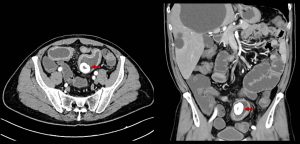
Fig. 1 Computed tomography revealed distal small intestinal wall thickening with a 3.4 × 2.8 cm high-density intraluminal foreign body (red arrow). a Transverse plane. b Coronal plane.
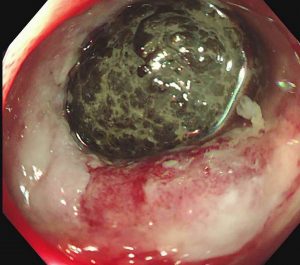
Fig. 2 A black fecalith was impacted in the distal ileum, approximately 40 cm from the ileocecal valve, and surrounded by a circular ulcer with stenosis.
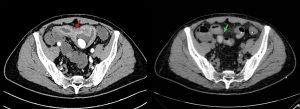
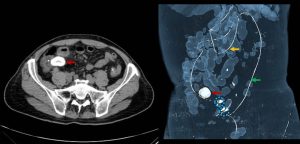
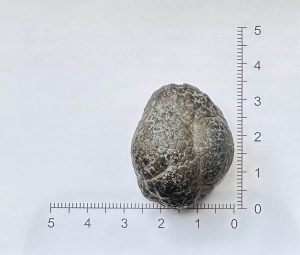
Reference:Wen Q, Cui B, Yu Y, Zhang F. Successful management of fecalith impaction in the distal ileum using a transendoscopic enteral tube for targeted drug delivery. Endoscopy. 2024 Dec;56(S 01):E736-E737. doi: 10.1055/a-2376-7350.


